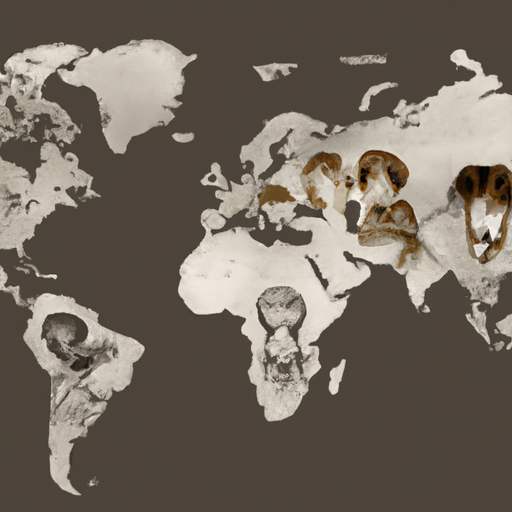As a passionate dog enthusiast, you may often wonder about the size of the global canine population. How many dogs are left in the world? This question is not as simple as it seems and requires an understanding of various factors, including the rate of pet adoption, breeding, and the life expectancy of dogs.
Table of Contents
1. Global Dog Population
2. Factors Influencing the Dog Population
3. The Issue of Stray Dogs
4. How You Can Help
5. Frequently Asked Questions
Key Takeaways
– The global dog population is estimated to be around 900 million.
– Several factors influence the dog population, including breeding, adoption rates, and life expectancy.
– Stray dogs present a significant challenge in estimating the total dog population.
– There are various ways in which you can contribute to managing the dog population.
Global Dog Population
According to the World Health Organization, there are approximately 900 million dogs worldwide. This population includes both pet dogs and stray or street dogs. However, this is just an approximate figure as the actual number of dogs may vary due to various factors.
The American Pet Products Association states that there are about 70 million pet dogs in the United States alone. These figures are derived from pet ownership surveys and census data. However, it’s important to note that such statistics mainly include pet dogs and might not fully account for stray dogs.
Factors Influencing the Dog Population
Several factors influence the size of the dog population. The most obvious ones include the rate of breeding and adoption. Breeding rates can vary widely, especially when you consider the difference between regulated breeders and unregulated or ‘backyard’ breeders.
Adoption rates also play a crucial role. Higher adoption rates can help control the population of stray dogs. In fact, the role of adoption in managing the dog population is so significant that there are numerous organizations such as the Humane Society International, dedicated to promoting it.
Life expectancy is another crucial factor. According to the American Kennel Club, the average lifespan of a dog is around 10-15 years, depending on the breed and health of the dog.
The Issue of Stray Dogs
Stray dogs present a significant challenge in estimating the total dog population. These dogs are often not accounted for in regular statistics. According to the World Health Organization, there are an estimated 200 million stray dogs worldwide.
Stray dogs can pose various issues, including overpopulation, disease transmission, and threats to wildlife. Many organizations are working towards managing the stray dog population. One such organization is PETA, which promotes the adoption of stray dogs and responsible pet ownership.
How You Can Help
As a compassionate caregiver, you may want to contribute to managing the dog population. Here’s how you can help:
- Adopt, Don’t Shop: Consider adopting a dog instead of buying one. This helps reduce the demand for puppy mills and provides a loving home to a dog in need.
- Spay and Neuter: Ensuring your pet dog is spayed or neutered can prevent unwanted litters and help control the dog population.
- Support Local Shelters: Local shelters often struggle with limited resources. Donating to these organizations or volunteering your time can make a significant difference.
- Promote Responsible Pet Ownership: Educate others about the importance of responsible pet ownership, including regular vet check-ups, proper feeding, and exercise.
Frequently Asked Questions
1. How many dogs are left in the world?
There are approximately 900 million dogs in the world. However, this figure includes both pet and stray dogs.
2. What factors influence the dog population?
Breeding, adoption rates, and the life expectancy of dogs are the primary factors influencing the dog population.
3. How can I help manage the dog population?
By adopting dogs instead of buying, ensuring your dog is spayed or neutered, supporting local shelters, and promoting responsible pet ownership, you can contribute to managing the dog population.
4. How many stray dogs are there in the world?
According to the World Health Organization, there are an estimated 200 million stray dogs worldwide.
5. What is the average lifespan of a dog?
The average lifespan of a dog is around 10-15 years, depending on the breed and health of the dog.
For more information about the global dog population, you can visit World Health Organization and American Pet Products Association. Other relevant resources include One Top Dog – Global Dog Population, One Top Dog – Responsible Pet Ownership, and One Top Dog – Dog Adoption.
Understanding the size of the global dog population helps us understand the scale of responsibility we share in ensuring the health and well-being of our four-legged friends. As a caregiver, every effort you make, no matter how small, can have a significant impact on the lives of these dogs.



